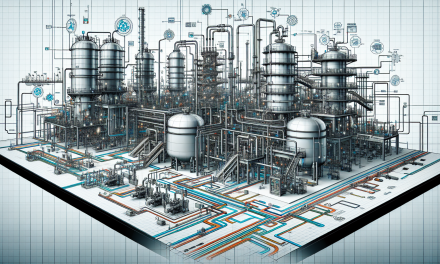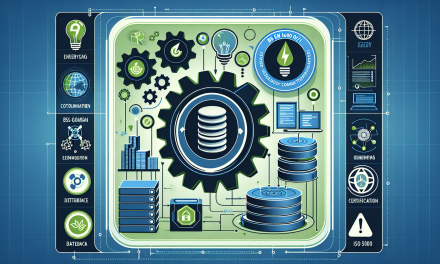Table of Contents
- Introduction
- Importance of Maintenance Management
- Key Elements of Effective Maintenance Strategies
- Developing a Maintenance Strategy
- Enhancing Existing Maintenance Strategies
- Best Practices for Maintenance Management
- Common Challenges and How to Overcome Them
- Further Resources
- FAQs
- Conclusion
Introduction
In the fast-paced world of industrial operations, effective maintenance management plays a pivotal role in ensuring productivity and efficiency. Developing and enhancing maintenance strategies is not just a task; it’s a continuous journey aimed at minimizing downtime and maximizing asset reliability. Engaging openly with this topic enables professionals to foster a thriving work environment where both personnel and machinery can perform at their best.
Importance of Maintenance Management
Maintenance management serves as the backbone of any operational excellence framework. Consequently, understanding its significance can lead to transformative impacts on overall business performance. Here are some key reasons why maintenance management should be a top priority:
1. Reduces Downtime
Frequent and unpredictable failures can significantly interrupt production. By prioritizing maintenance, organizations can anticipate and address potential issues before they escalate, thus significantly reducing downtime.
2. Enhances Safety
Regular maintenance ensures that all equipment operates safely, thereby protecting employees and minimizing risk. Safe machinery translates to a safe workplace.
3. Lowers Operational Costs
Investing in preventive maintenance strategies can help identify issues early, avoiding costly emergency repairs that disrupt production, all while contributing to substantial savings.
4. Extends Equipment Lifespan
Consistent and proper maintenance helps machinery perform optimally while increasing its longevity. This leads to less frequent investments in new equipment.
Key Elements of Effective Maintenance Strategies
Developing an effective maintenance strategy requires several key components, each contributing to the overall success of the program. These include:
1. Data-Driven Insights
Utilizing analytics is crucial. By collecting and analyzing data, companies can identify patterns and trends and make informed decisions regarding maintenance tasks.
2. Workforce Planning
A skilled workforce can make or break maintenance effectiveness. Investing in training and knowledge-sharing ensures everyone is aligned and equipped with the right skills.
3. Technological Integration
Incorporating advanced technology solutions, such as Computerized Maintenance Management Systems (CMMS), enhances tracking and reporting efforts, facilitating proactive maintenance measures.
4. Clear Objectives and KPI Setting
Establishing measurable goals allows for effective tracking of maintenance performance. Key Performance Indicators (KPIs) help gauge success and areas needing improvement.
Developing a Maintenance Strategy
To build a robust maintenance strategy, organizations can follow this structured approach:
Step 1: Assess Current Maintenance Practices
Commence by auditing existing maintenance practices. What works well? What doesn’t? Gathering feedback from staff throughout all levels ensures comprehensive evaluation.
Step 2: Define Goals and Objectives
Once assessments are complete, it’s essential to define clear goals and objectives qualitatively and quantitatively. This contributes to a focused approach.
Step 3: Implement Advanced Techniques
Transitioning from reactive to proactive maintenance, incorporate advanced techniques such as predictive maintenance to enhance reliability.
Step 4: Invest in Training
Engage employees with continuous training opportunities. The more knowledgeable the workforce, the more efficiently and safely they can operate machinery.
Step 5: Review and Adjust
Lastly, routinely review the maintenance strategy for optimization. Adapting to new challenges and innovations is essential for sustained success.
Enhancing Existing Maintenance Strategies
If an organization already has a maintenance strategy in place, enhancing it is equally crucial to keep up with evolving industry standards. Here are effective approaches to consider:
1. Adopt a Continuous Improvement Mindset
Encourage an organizational culture focused on continuous improvement. Empower team members to share insights and suggest enhancements to current practices.
2. Leverage Industry Best Practices
Stay updated with industry trends by leveraging insightful resources such as Unlocking Advanced Maintenance Management Insights for Professionals, which offers expert advice on optimized practices.
3. Integrate Industry 4.0 Technologies
Explore integration of IoT devices, machine learning, and automation in maintenance practices. These technologies provide unprecedented levels of insight and control over equipment health.
4. Collaborate Across Departments
Encouraging collaboration among departments like operations and maintenance can lead to significant improvements and efficiencies.
5. Focus on the Bigger Picture
Always keep in mind the overarching organizational goals while enhancing maintenance strategies. Aligning maintenance efforts with business objectives ensures coherence and relevance.
Best Practices for Maintenance Management
To successfully manage maintenance, incorporate the following best practices:
1. Establish a Routine Inspection Schedule
Regular inspections can unveil early signs of wear or failure, thus preventing more significant problems down the line.
2. Utilize a Comprehensive CMMS
A Computerized Maintenance Management System streamlines maintenance tasks, making it easier to schedule work orders and manage inventory.
3. Develop Preventive Maintenance Checklists
Craft checklists for preventive maintenance tasks. This ensures that essential tasks are not overlooked and helps maintain consistency.
4. Train Staff Regularly
Continuous training for staff on the latest techniques and technologies helps maintain and enhance their skillsets.
5. Monitor Key Performance Indicators (KPIs)
Regularly monitor KPIs related to maintenance efficiency, effectiveness, and employee engagement to identify areas for improvement.
Common Challenges and How to Overcome Them
Every maintenance management program faces challenges. However, by recognizing these hurdles and proactively addressing them, organizations can ensure resilience:
1. Resistance to Change
Change often meets resistance. To overcome this, engage employees by clearly communicating the benefits and providing adequate training.
2. Insufficient Data
Making informed decisions requires robust data. Invest in data analytics tools that provide comprehensive insights into maintenance needs.
3. Budget Constraints
Limited budgets can constrain maintenance efforts. Highlight the long-term cost-saving benefits of investing in maintenance improvements.
4. Lack of Standardization
Establish standardized procedures to bring consistency to maintenance tasks, which reduces errors and enhances productivity.
5. Underestimating Training Needs
Regularly assess training needs and develop tailored training programs to ensure the workforce remains knowledgeable and safe.
Further Resources
The journey towards mastering maintenance management is ongoing. To deepen your understanding, consider engaging with expert-led resources such as:
- Mastering Maintenance Planning Strategies
- Unlocking the Secrets of Effective Maintenance
- Comprehensive Guide to Process Plant Startup & Troubleshooting
- Mastering Process Plant Startup and Commissioning
- Master Maintenance Management Strategy & Process Course
FAQs
What is maintenance management?
Maintenance management refers to the procedures and strategies employed to ensure that equipment and facilities are maintained efficiently and effectively, promoting operational excellence.
Why is developing a maintenance strategy important?
A well-defined maintenance strategy reduces operational costs, lowers downtime, and extends equipment lifespan, ensuring that machines operate safely and efficiently.
How can technology improve maintenance management?
Technological advancements such as CMMS and IoT devices enable real-time monitoring and data collection, allowing for predictive maintenance and informed decision-making.
What are some common challenges in maintenance management?
Common challenges include resistance to change, insufficient data, budget constraints, lack of standardization, and underestimating the need for ongoing training.
How can I ensure continuous improvement in maintenance management?
Regularly review, assess, and enhance your maintenance strategies while fostering an open culture of feedback and continuous learning among staff.
Conclusion
In conclusion, developing and enhancing maintenance strategies is a crucial aspect of operational management. With proper planning, effective communication, and a focus on continuous improvement, organizations can foster an environment that promotes reliability, safety, and profitability. Embrace the journey, stay informed, and let your maintenance management strategy evolve as needed for future success.





